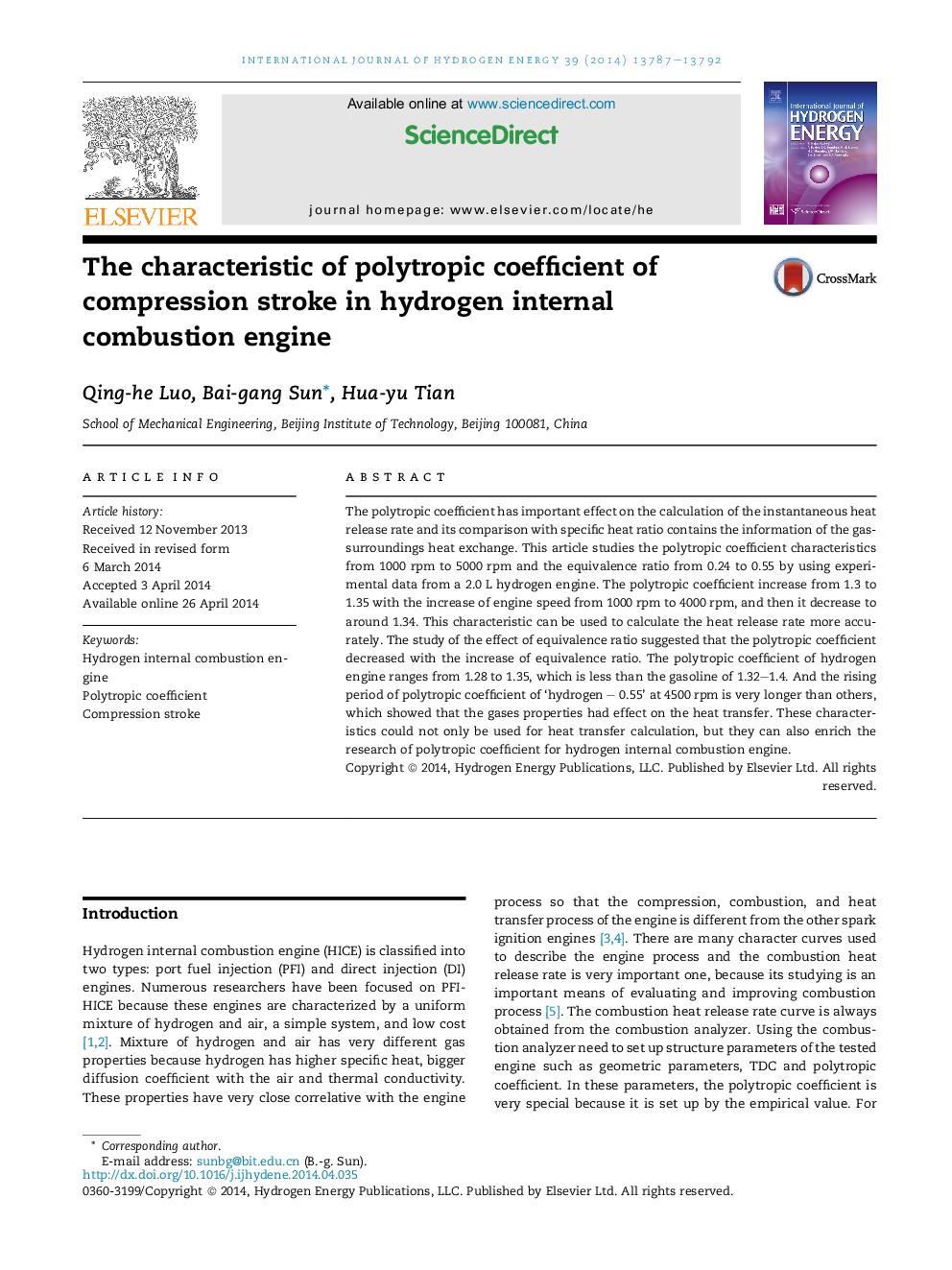| Article ID | Journal | Published Year | Pages | File Type |
|---|---|---|---|---|
| 1272684 | International Journal of Hydrogen Energy | 2014 | 6 Pages |
•The characteristics of n are studied in a 2.0 L hydrogen internal combustion engine.•The values of n range from 1.31 to 1.35 with engine speed from 1000 rpm to 5000 rpm.•The values of n decrease with equivalence ratio increasing from 0.21 to 0.55.
The polytropic coefficient has important effect on the calculation of the instantaneous heat release rate and its comparison with specific heat ratio contains the information of the gas-surroundings heat exchange. This article studies the polytropic coefficient characteristics from 1000 rpm to 5000 rpm and the equivalence ratio from 0.24 to 0.55 by using experimental data from a 2.0 L hydrogen engine. The polytropic coefficient increase from 1.3 to 1.35 with the increase of engine speed from 1000 rpm to 4000 rpm, and then it decrease to around 1.34. This characteristic can be used to calculate the heat release rate more accurately. The study of the effect of equivalence ratio suggested that the polytropic coefficient decreased with the increase of equivalence ratio. The polytropic coefficient of hydrogen engine ranges from 1.28 to 1.35, which is less than the gasoline of 1.32–1.4. And the rising period of polytropic coefficient of ‘hydrogen – 0.55’ at 4500 rpm is very longer than others, which showed that the gases properties had effect on the heat transfer. These characteristics could not only be used for heat transfer calculation, but they can also enrich the research of polytropic coefficient for hydrogen internal combustion engine.
